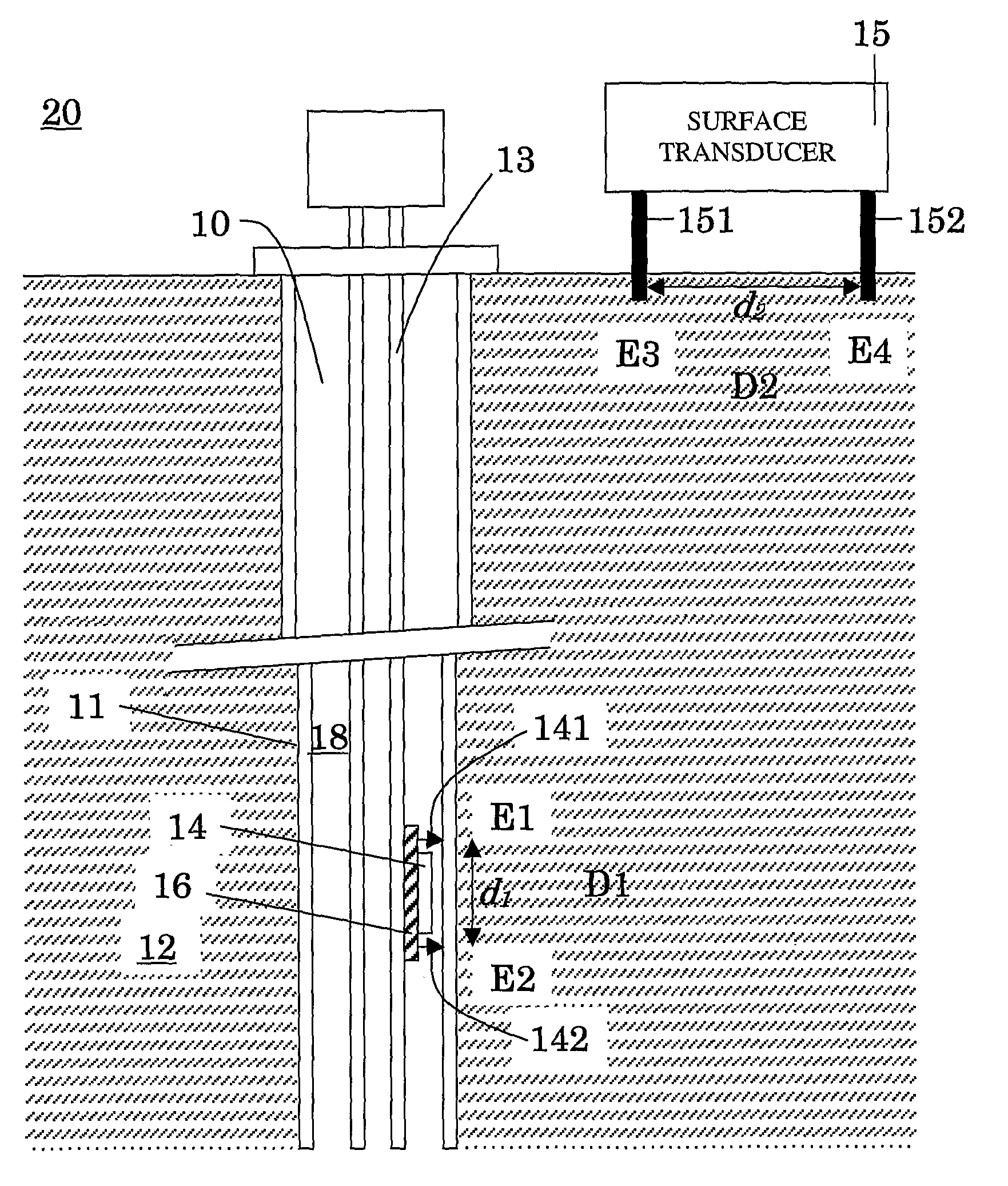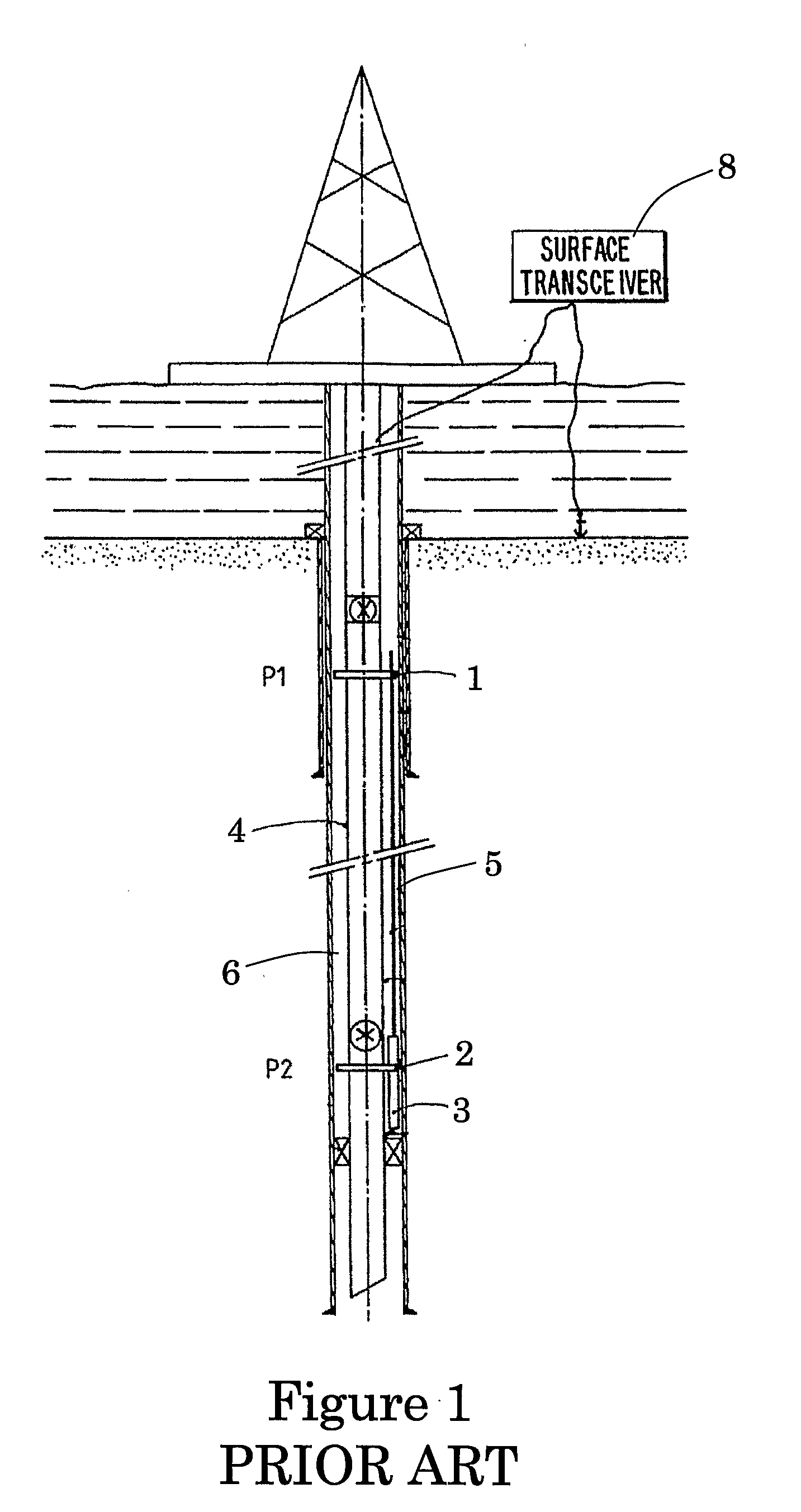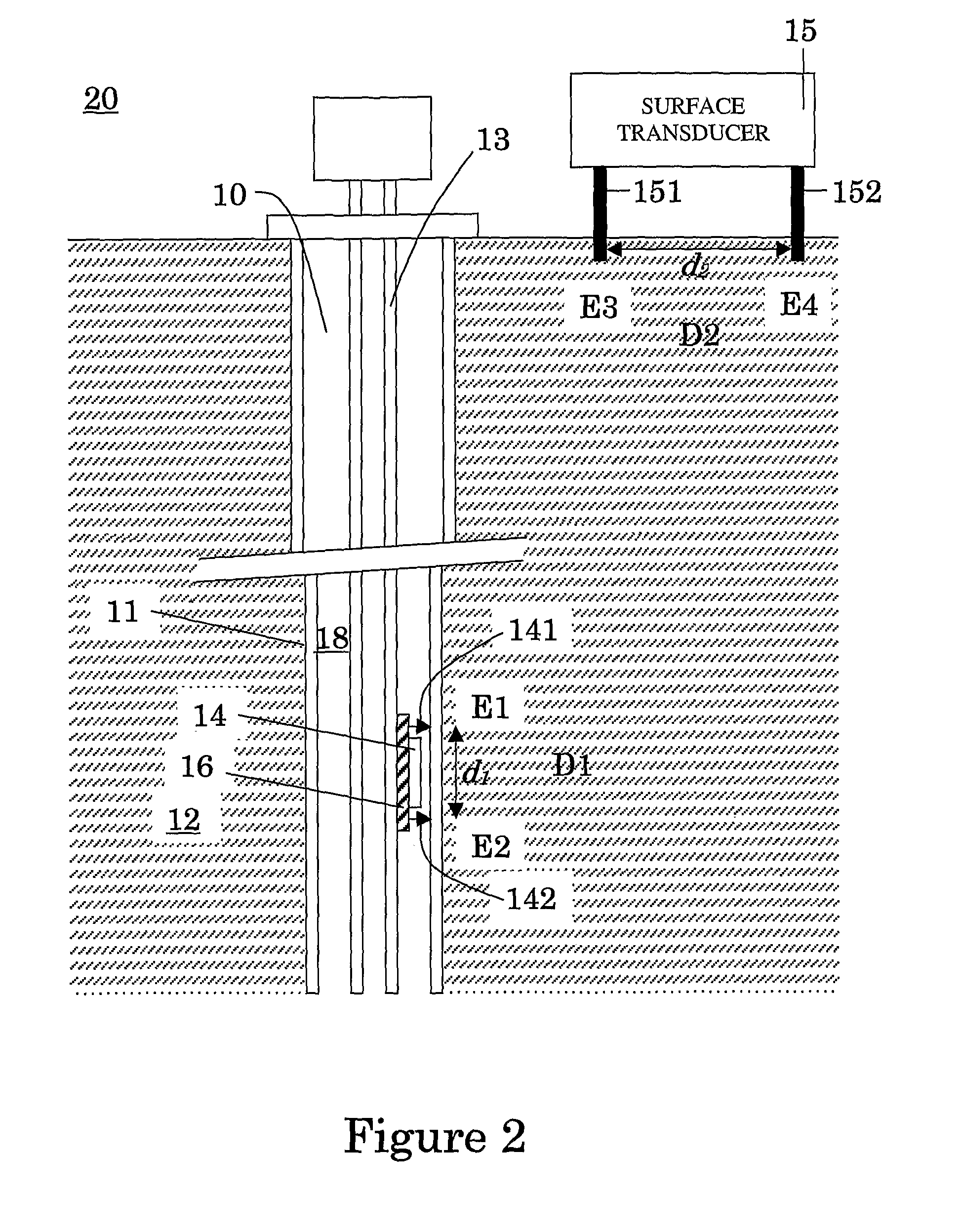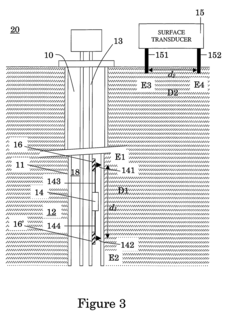Schumann Resonance Monitoring: Techniques and Tools
Schumann Resonance Background and Objectives
Schumann resonances, discovered by physicist Winfried Otto Schumann in 1952, are a set of spectrum peaks in the extremely low frequency (ELF) portion of the Earth's electromagnetic field spectrum. These resonances occur between the Earth's surface and the ionosphere, creating a natural global electromagnetic resonance phenomenon. The fundamental frequency of Schumann resonances is approximately 7.83 Hz, with harmonics at higher frequencies.
The study of Schumann resonances has gained significant attention in recent years due to its potential applications in various fields, including climate monitoring, earthquake prediction, and even human health research. As a result, the development of advanced techniques and tools for monitoring Schumann resonances has become increasingly important.
The primary objective of Schumann resonance monitoring is to accurately measure and analyze the electromagnetic signals generated by this natural phenomenon. This involves detecting extremely weak signals in the ELF range, typically between 3 Hz and 60 Hz, which requires highly sensitive equipment and sophisticated signal processing techniques.
One of the key challenges in Schumann resonance monitoring is the need to filter out anthropogenic noise and other electromagnetic interference. As human activities and technological advancements continue to increase, the background electromagnetic noise levels have also risen, making it more difficult to isolate and measure the Schumann resonance signals accurately.
The evolution of Schumann resonance monitoring techniques has been driven by advancements in sensor technology, data acquisition systems, and signal processing algorithms. Early monitoring systems relied on simple antennas and analog recording devices, while modern systems employ highly sensitive magnetometers, advanced digital signal processing techniques, and real-time data analysis capabilities.
Current research in Schumann resonance monitoring focuses on improving the sensitivity and reliability of measurement techniques, developing more efficient noise reduction methods, and exploring new applications for the data collected. Additionally, there is growing interest in establishing a global network of Schumann resonance monitoring stations to provide comprehensive, real-time data on this phenomenon.
As we continue to explore the potential of Schumann resonance monitoring, the development of more advanced techniques and tools remains a critical area of research. These advancements will not only enhance our understanding of the Earth's electromagnetic environment but also contribute to various scientific and practical applications across multiple disciplines.
Market Analysis for SR Monitoring Tools
The market for Schumann Resonance (SR) monitoring tools has been experiencing steady growth in recent years, driven by increasing awareness of the potential applications of SR data in various fields. The global market for SR monitoring equipment is primarily segmented into scientific research, environmental monitoring, and health and wellness sectors.
In the scientific research segment, universities and research institutions constitute the largest customer base. These organizations utilize SR monitoring tools for studying Earth's electromagnetic environment, ionospheric dynamics, and potential correlations with geophysical phenomena. The demand in this sector is expected to grow as more interdisciplinary research projects incorporate SR data into their studies.
The environmental monitoring sector has shown significant interest in SR monitoring tools. Government agencies and environmental organizations use these instruments to track changes in the Earth's electromagnetic field, which may be linked to climate change, seismic activity, and other environmental factors. This segment is projected to expand as climate change concerns intensify and the need for comprehensive environmental data increases.
The health and wellness industry represents an emerging market for SR monitoring tools. Some alternative health practitioners and wellness centers have begun incorporating SR data into their practices, claiming potential benefits for human health and well-being. While this segment is still relatively small, it shows potential for growth as more research is conducted on the possible effects of SR on human physiology.
Key market drivers include technological advancements in sensor technology, increasing affordability of monitoring equipment, and growing interest in Earth system science. The development of more compact, portable, and user-friendly SR monitoring devices has expanded the potential user base beyond traditional scientific institutions.
However, the market faces challenges such as limited public awareness of SR and its applications, as well as the need for standardization in measurement techniques and data interpretation. Additionally, the relatively high cost of high-precision SR monitoring equipment remains a barrier for smaller organizations and individual researchers.
Geographically, North America and Europe currently dominate the market due to their strong research infrastructure and environmental monitoring programs. However, the Asia-Pacific region is expected to show the fastest growth in the coming years, driven by increasing investment in scientific research and environmental monitoring in countries like China, Japan, and India.
As the market for SR monitoring tools continues to evolve, opportunities for innovation lie in developing more affordable and accessible devices, improving data analysis software, and expanding applications in fields such as space weather prediction, earthquake forecasting, and human health studies. The integration of SR monitoring with other environmental sensing technologies and IoT platforms also presents promising avenues for market expansion.
Current SR Monitoring Challenges
Schumann Resonance (SR) monitoring faces several significant challenges in the current technological landscape. One of the primary obstacles is the low signal-to-noise ratio inherent in SR measurements. The extremely low frequency (ELF) signals of Schumann Resonances are often overwhelmed by anthropogenic electromagnetic noise, particularly in urban and industrialized areas. This interference makes it increasingly difficult to obtain accurate and reliable SR data.
Another challenge lies in the need for highly sensitive and specialized equipment. SR monitoring requires extremely low-noise amplifiers, precise analog-to-digital converters, and sophisticated signal processing techniques. The development and maintenance of such equipment can be costly and technically demanding, limiting the widespread deployment of SR monitoring stations.
The global distribution of SR monitoring stations presents an additional hurdle. To obtain a comprehensive understanding of global SR patterns, a network of monitoring stations distributed across various geographical locations is necessary. However, establishing and maintaining such a network involves significant logistical and financial challenges, particularly in remote or challenging environments.
Calibration and standardization of SR monitoring equipment across different stations pose another significant challenge. Variations in equipment specifications, local environmental conditions, and data processing methods can lead to inconsistencies in SR measurements between different monitoring sites. This lack of standardization complicates the comparison and integration of data from multiple sources.
Long-term stability and reliability of SR monitoring systems are crucial for tracking changes over extended periods. However, maintaining consistent performance over years or decades is challenging due to equipment degradation, environmental factors, and evolving electromagnetic interference patterns. Ensuring the continuity and comparability of long-term SR data sets remains a persistent challenge.
The interpretation of SR data presents its own set of challenges. Distinguishing between natural variations in SR parameters and those caused by human activities or geophysical events requires sophisticated analysis techniques. The complex nature of SR phenomena and their interactions with various atmospheric and ionospheric processes further complicate data interpretation.
Lastly, the integration of SR monitoring with other geophysical and atmospheric observation systems represents an ongoing challenge. Correlating SR data with other environmental parameters such as lightning activity, ionospheric conditions, and climate variables requires interdisciplinary approaches and advanced data fusion techniques. Developing these integrated monitoring and analysis frameworks remains a significant area of ongoing research and development in the field of SR monitoring.
Existing SR Monitoring Solutions
01 Schumann resonance detection devices
Various devices and systems have been developed for detecting and monitoring Schumann resonances. These devices typically include sensors, antennas, and signal processing units designed to capture and analyze the low-frequency electromagnetic waves associated with Schumann resonances. Some devices are portable and can be used for field measurements, while others are designed for continuous monitoring in fixed locations.- Schumann resonance detection devices: Various devices have been developed for detecting and monitoring Schumann resonances. These devices typically include sensors, antennas, and signal processing components to capture and analyze the extremely low frequency electromagnetic waves associated with Schumann resonances. Some designs focus on portable or wearable configurations for personal use, while others are intended for more extensive environmental monitoring.
- Data processing and analysis techniques: Advanced data processing and analysis techniques are employed to extract meaningful information from Schumann resonance signals. These methods may involve filtering, spectral analysis, and machine learning algorithms to identify patterns, anomalies, or correlations with other environmental or physiological parameters. Some systems integrate real-time processing capabilities for immediate feedback or alerts.
- Integration with health and wellness applications: Schumann resonance monitoring is being incorporated into various health and wellness applications. These may include devices or systems that aim to synchronize human biorhythms with natural electromagnetic frequencies, potentially offering benefits for relaxation, sleep quality, or overall well-being. Some products combine Schumann resonance monitoring with other biofeedback or environmental sensing technologies.
- Environmental and geophysical research applications: Schumann resonance monitoring plays a role in environmental and geophysical research. It can be used to study global lightning activity, ionospheric conditions, and potential correlations with climate patterns or seismic activity. Some systems are designed for long-term, high-precision measurements to support scientific investigations and contribute to our understanding of Earth's electromagnetic environment.
- Electromagnetic shielding and protection: Some inventions focus on electromagnetic shielding or protection related to Schumann resonances. These may include devices or materials designed to block or attenuate certain frequencies while allowing beneficial ones to pass through. Such technologies aim to create environments that maintain a balance between natural electromagnetic fields and potentially harmful artificial electromagnetic radiation.
02 Applications in health and wellness
Schumann resonance monitoring has found applications in health and wellness fields. Some devices are designed to generate or simulate Schumann resonances for therapeutic purposes, based on the belief that exposure to these frequencies may have beneficial effects on human health. These applications range from stress reduction to improving sleep quality and overall well-being.Expand Specific Solutions03 Environmental and geophysical monitoring
Schumann resonance monitoring is used in environmental and geophysical studies. It can provide insights into global lightning activity, ionospheric conditions, and potentially serve as an indicator of climate change. Monitoring systems have been developed to track long-term changes in Schumann resonance parameters and correlate them with various environmental factors.Expand Specific Solutions04 Advanced signal processing techniques
Researchers have developed advanced signal processing techniques to improve the detection and analysis of Schumann resonances. These methods aim to enhance signal-to-noise ratios, separate Schumann resonances from other electromagnetic phenomena, and extract more detailed information about the resonances. Machine learning and artificial intelligence approaches are also being explored to improve data analysis and interpretation.Expand Specific Solutions05 Integration with other monitoring systems
Schumann resonance monitoring is being integrated with other environmental and geophysical monitoring systems. This integration allows for a more comprehensive understanding of global electromagnetic phenomena and their relationships to various Earth processes. Some systems combine Schumann resonance monitoring with measurements of other atmospheric and ionospheric parameters to provide a more complete picture of the Earth's electromagnetic environment.Expand Specific Solutions
Key Players in SR Monitoring Field
The Schumann Resonance Monitoring market is in its growth stage, with increasing interest from both scientific and commercial sectors. The market size is expanding as applications in environmental monitoring, health research, and electromagnetic field studies gain traction. Technologically, the field is moderately mature, with established monitoring techniques, but there's room for innovation. Companies like Koninklijke Philips NV, Schlumberger Technologies, Inc., and GE Precision Healthcare LLC are leveraging their expertise in sensing and data analysis to develop advanced monitoring tools. Emerging players such as MILLIKELVIN TECHNOLOGIES LLC and Industrial Technology Research Institute are focusing on specialized applications, potentially driving technological advancements and market diversification in this niche but growing field.
Emory University
Industrial Technology Research Institute
Core SR Detection Innovations
- The method involves using transducers with electrodes in electrical contact with the casing to transmit and receive electric signals, with low electrical resistance to ensure effective communication, and optionally employing relay transducers to increase range and network communication capabilities, while insulation and shielding enhance signal quality and protect against interference.
- The method involves using transducers with electrodes in electrical contact with the well casing to transmit and receive electric signals, maintaining low resistance to ensure reliable communication, and optionally employing relay transducers and insulation to enhance signal quality and range, while also determining conductivity profiles using Schumann resonances.
Environmental Impact of SR Monitoring
Schumann Resonance (SR) monitoring, while providing valuable insights into global electromagnetic phenomena, also has potential environmental impacts that warrant careful consideration. The primary environmental concern associated with SR monitoring is the installation and operation of monitoring stations, which typically require sensitive equipment and infrastructure in remote locations.
These monitoring stations often necessitate the clearing of small areas of land for equipment placement and access roads. While the footprint of individual stations is relatively small, the cumulative impact of multiple stations across diverse ecosystems could be significant. In sensitive habitats, even minor disturbances can have far-reaching consequences for local flora and fauna.
The equipment used in SR monitoring, including antennas and sensors, may introduce electromagnetic fields (EMFs) into the surrounding environment. Although these EMFs are generally weak, their long-term effects on local wildlife, particularly on species sensitive to electromagnetic radiation, remain a subject of ongoing research and debate.
Power requirements for SR monitoring stations can also pose environmental challenges. In remote locations, diesel generators or solar panels are often used to supply electricity. Diesel generators contribute to air pollution and greenhouse gas emissions, while solar panels require the production and eventual disposal of photovoltaic materials, which can have their own environmental implications.
Data transmission from monitoring stations to research centers typically relies on satellite or radio communications. These systems, while essential for real-time data collection, contribute to the growing issue of electromagnetic pollution, potentially affecting wildlife navigation and communication patterns in the vicinity of monitoring sites.
Maintenance activities for SR monitoring stations, including regular equipment checks and repairs, necessitate human presence in otherwise undisturbed areas. This can lead to unintended consequences such as the introduction of invasive species, soil compaction, and disturbance to wildlife breeding patterns.
On a positive note, SR monitoring contributes significantly to our understanding of global electromagnetic phenomena and climate patterns. This knowledge is crucial for developing strategies to mitigate the effects of climate change and extreme weather events, potentially outweighing the localized environmental impacts of monitoring activities.
To minimize the environmental footprint of SR monitoring, researchers and engineers are exploring more sustainable approaches. These include the development of more energy-efficient monitoring equipment, the use of renewable energy sources, and the implementation of remote monitoring technologies to reduce the need for on-site maintenance.
SR Data Applications and Use Cases
Schumann Resonance (SR) data has found a wide range of applications across various scientific disciplines and practical use cases. In the field of geophysics, SR measurements are utilized to study the Earth's ionosphere and its variations. Researchers analyze SR data to investigate the relationship between ionospheric changes and various atmospheric phenomena, such as thunderstorms, solar activity, and climate patterns. This information contributes to our understanding of global atmospheric dynamics and helps improve weather forecasting models.
In space weather monitoring, SR data plays a crucial role in detecting and predicting solar storms and their potential impacts on Earth. By observing changes in SR frequencies and amplitudes, scientists can identify disturbances in the ionosphere caused by solar flares or coronal mass ejections. This early warning system is vital for protecting satellite communications, power grids, and other critical infrastructure from the effects of geomagnetic storms.
SR monitoring has also found applications in earthquake prediction research. Some studies suggest that changes in SR parameters may be associated with seismic activity. While this relationship is still under investigation, SR data analysis could potentially contribute to the development of more accurate earthquake forecasting methods in the future.
In the field of biophysics, SR data is being explored for its potential effects on human health and well-being. Some researchers hypothesize that the Earth's natural electromagnetic frequencies may influence biological rhythms and physiological processes. This has led to investigations into the possible therapeutic applications of SR-based technologies, such as devices designed to simulate the Earth's natural electromagnetic environment.
Environmental monitoring is another area where SR data proves valuable. Changes in SR parameters can indicate variations in global lightning activity, which is closely linked to climate patterns and atmospheric conditions. By analyzing long-term SR data, scientists can track trends in global temperature, humidity, and other climate-related factors, contributing to climate change research and environmental impact assessments.
In the realm of telecommunications, SR monitoring helps in understanding and mitigating the effects of electromagnetic interference on communication systems. By characterizing the natural background electromagnetic noise, engineers can design more robust and efficient communication technologies that can operate effectively in the presence of SR and other natural electromagnetic phenomena.







